Profiles
Frequently import the same type of file? Save your preferences!
The Import Profiles page is where you can define and manage the profiles for your Quable PIM imports. The page includes a brief description of the feature, a link to this documentation page, and a list of existing import profiles, if any.
-
If no import profiles have been created yet, a Create Profile button is displayed in both the Current Import Profiles section and the top right corner of the page.
-
If import profiles have already been created, a list is displayed with: the Name of the profile, the profile's Data Type, the file Format (CSV or XLSX), an indication if attribute Mapping is used, data Languages, and whether or not the profile is for Remote imports. The Create Profile button is only displayed in the top right corner of the page.
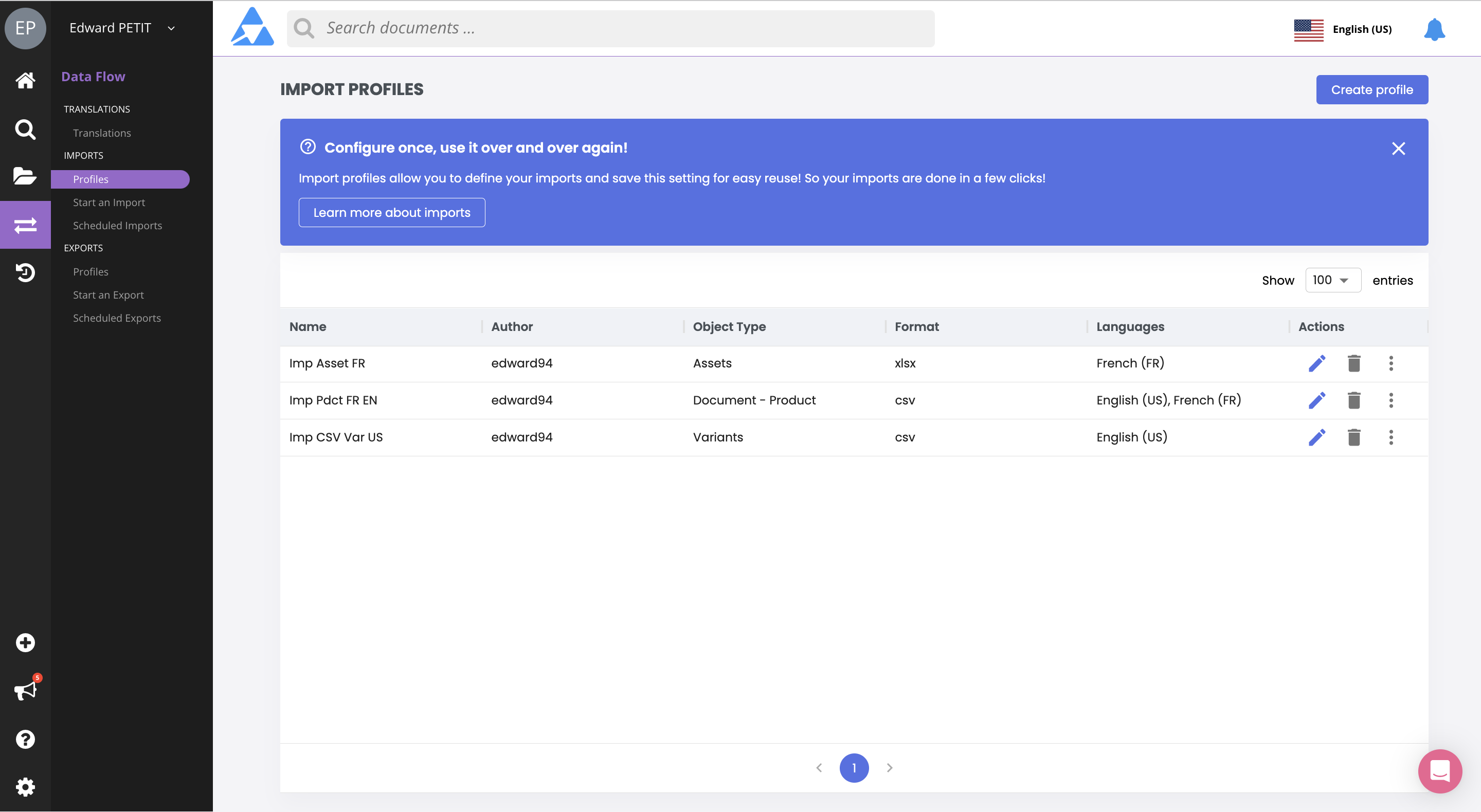

| When you click: | |
Initiate a punctual import - A page for starting the import is displayed, preconfigured for the selected profile. | 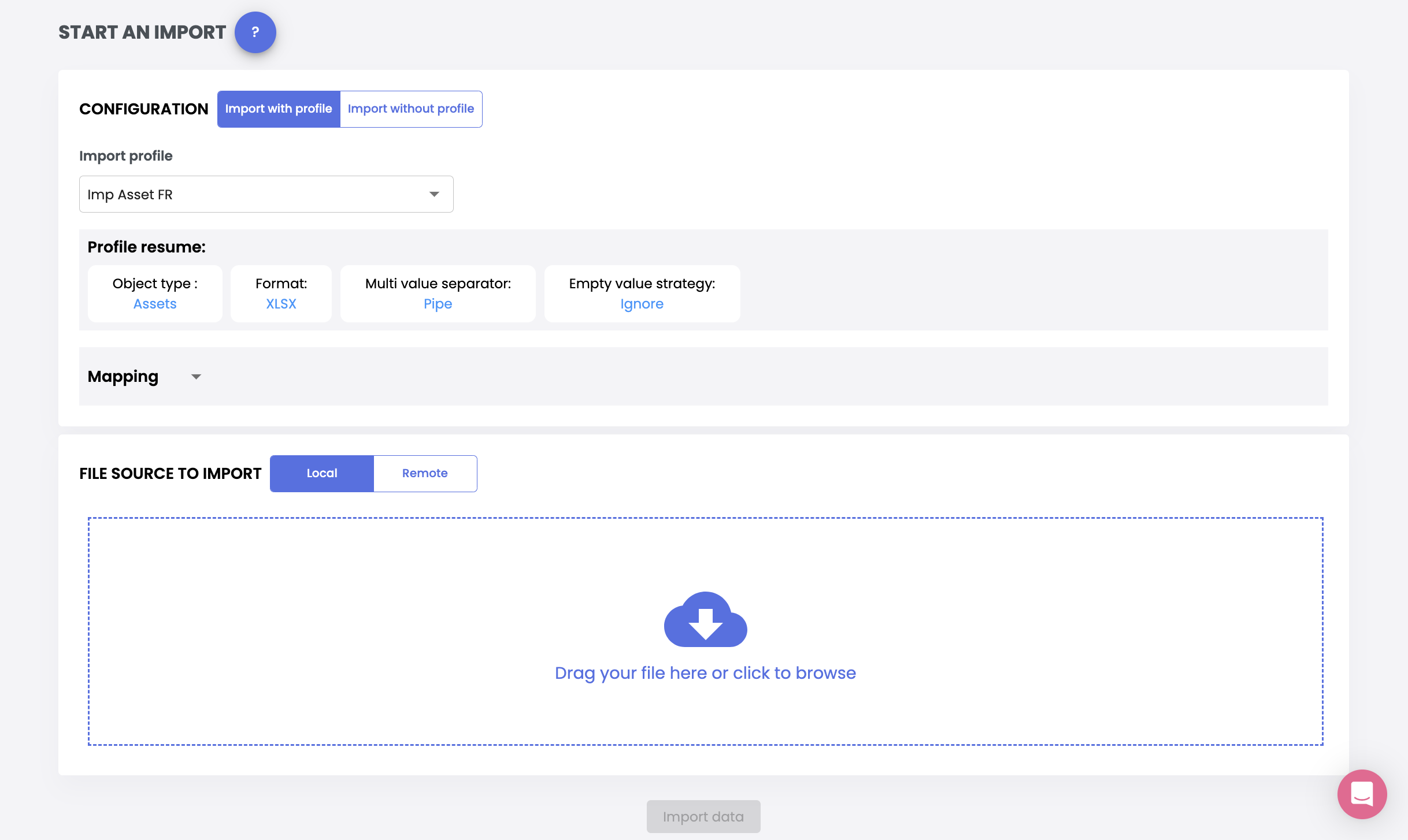 |
Download the import file template - A CSV file is downloaded with predefined column headers according to the selected profile. |  |
Creating Profiles
To create an import profile click the Create Profile button. The Create an Import Profile form is displayed:
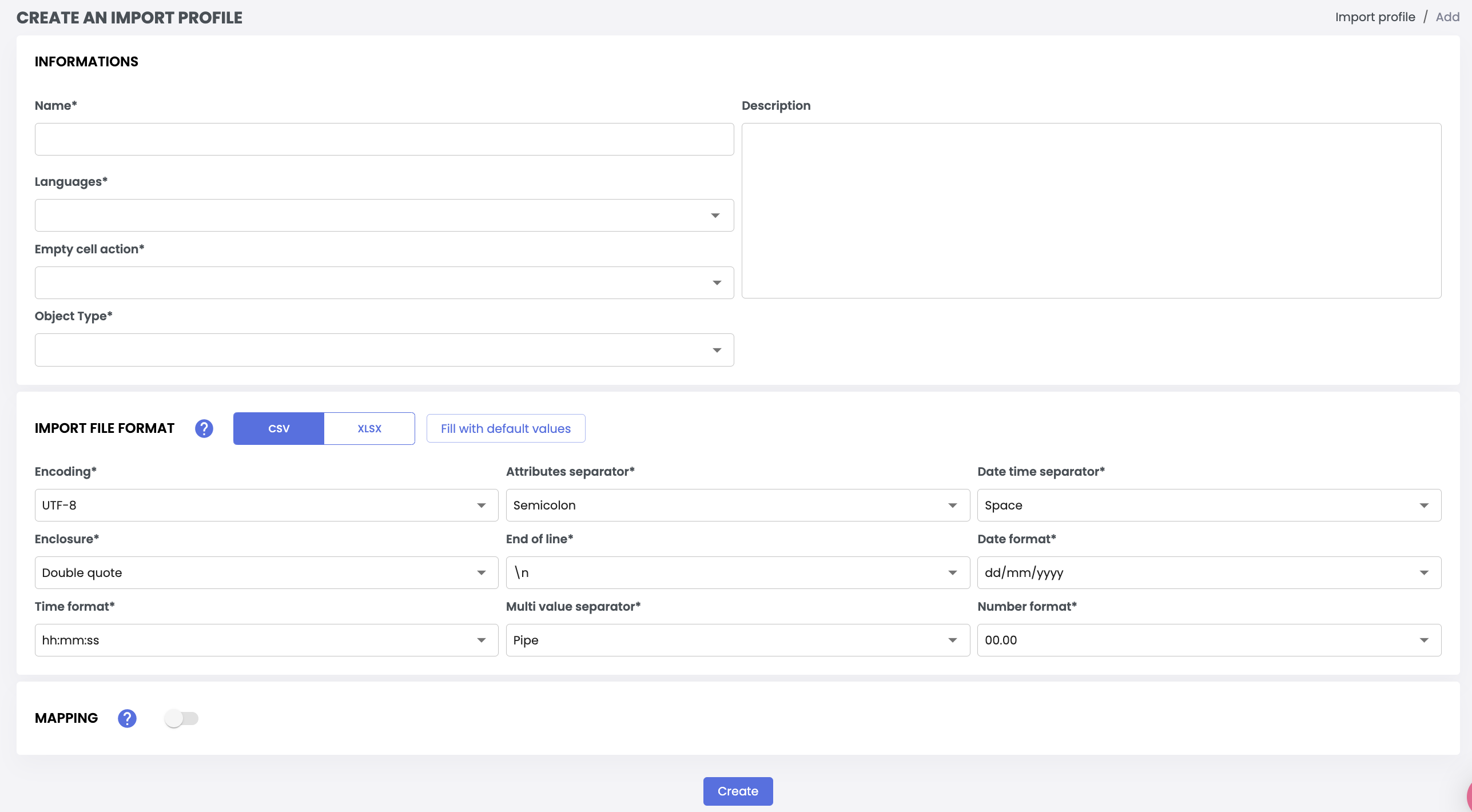
The form is divided into three sections: Profile Identity, Import File Format, and Mapping. These are described in detail below. When you've completed the sections, click the Create button to save the profile.
Profile Identity
This section is used to distinguish each import profile and its settings.

Enter the following information:
Information | Description | Mandatory |
|---|---|---|
Name | The name of the import profile. | Yes |
Description | Enter text to describe the import profile. | No |
Object Type | The type of content the profile will import. Possible values:
| Yes |
Languages | The data language to import. Example | Yes |
Empty cell action | Defines the action to take if empty cells are encountered during the import operation. By default, empty cells are considered = 0. Possible values:
| Yes |
Import File Format
Important Note
- File formats can not be changed once a profile is saved.
- Files can only be imported one at a time.
- Large files (100+ columns) may impact performance during the import.
This section is used to specify the format and parameters (if any) of your import file. Two options are available:
- XLSX

Limitation on XLSX files:
- Maximum file size: 10Mb
- Maximum number of lines: 200,000
- Maximum number of columns: 1000
Mapping is required for .xlsx imports.To import .xlsx files, standard settings are used. You don't need to specify any parameters.
In the case of .xlsx files, standard settings are used. You do not need to specify any parameters.
- CSV (default)

Limitations on CSV FilesThe following limitations apply to CSV import files:
- Maximum file size: 50 MB
- Maximum number of lines: 200,000
- Maximum number of columns: 1,000
Good to knowMapping is optional for .csv imports.
To import .csv files, you have two options for parameters:
- Standard - Standard settings are used. You don't need to specify any parameters.
- Custom - You must specify the following parameters (you can click the Fill with default values link to automatically select the default settings):
| Parameter | Description | Possible values |
|---|---|---|
| Encoding | The Unicode character encoding of the import file. | UTF-8 (default) |
| Attributes separator | The character used to separate attributes in the import file. | Comma, Semicolon (default), Tab |
| Date time separator | The character used to separate date and time values in the import file. | Space (default) |
| Enclosure | The character used to indicate the beginning and end of a data value. | Double quote (default), Single quote |
| End of line | The character used to indicate the end of a line of data. | \n (default) |
| Date format | The format used for dates in the import file. | yyyy/mm/dd, dd/mm/yyyy (default) |
| Time format | The format used for times in the import file. | hh:mm.ss (default) |
| Multi value separator | The character used to separate multiple values within an enclosure. | Pipe (default) |
| Number format | The format used for numbers in the import file. | 00.00 (default), 00,00 |
Mapping
This section allows you to specify which columns of your import file correspond to the content in your Quable PIM.

WarningWhen mapping is enabled, only the mapped columns are taken into account and imported.
Enabling the mapping option expands the section:
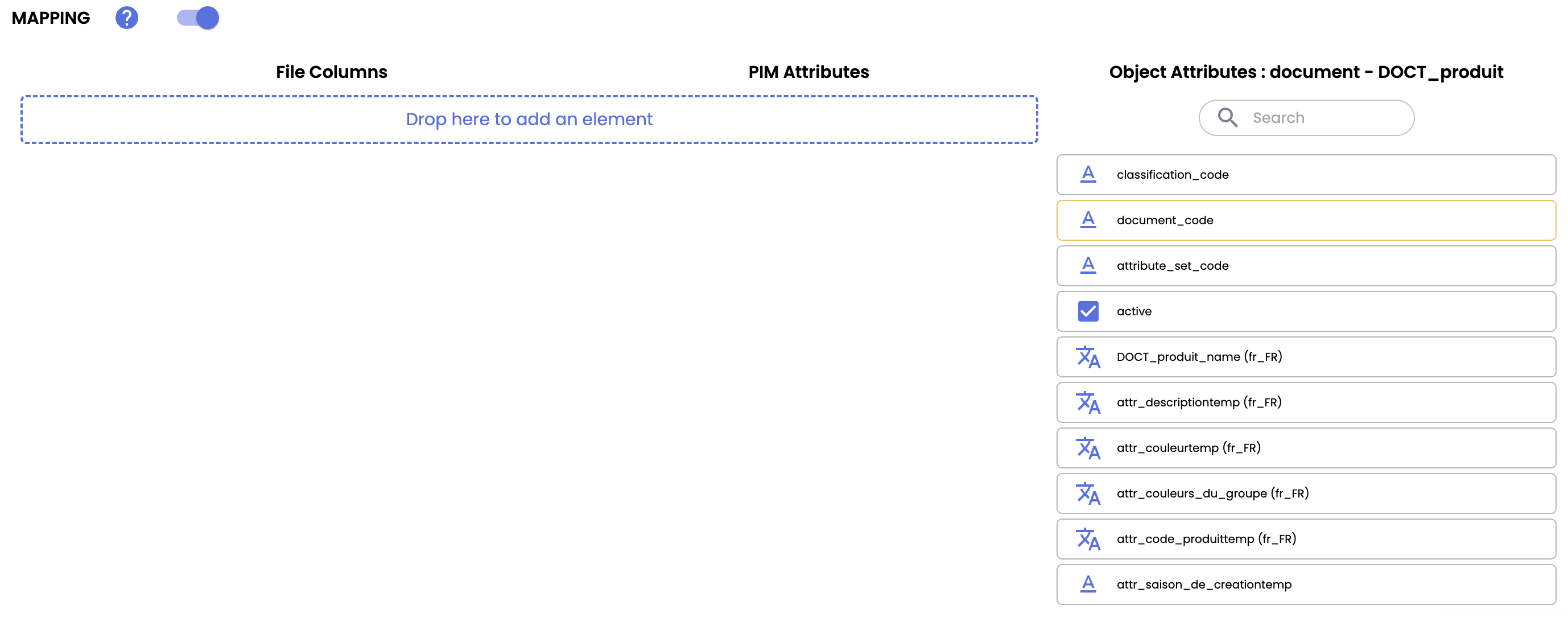
The expanded section is divided into three columns:
- File Columns - This column is used to identify columns in your import file.
- PIM Attributes - This column is used to designate the PIM attribute that corresponds to the file column.
- Object Attributes - The column contains all of the available properties for the selected object type.
To map your import file to your Quable PIM content, select attributes from the Object Attributes column and drag / drop them into the area below File Columns -> PIM Attributes.

Important note
- Object Attributes outlined in orange are mandatory. An import can't be started if they're not selected.
- All of the columns in your import file must be mapped to PIM attributes.
You can modify the titles of the attributes under File Columns so that they correspond to the titles of the columns of your import file.
Once you have entered all the information for a new import profile, click the Create button to save your changes or the Return link (at the top of the form) to return to the Import Profiles page without saving the new import profile.
Editing Profiles
You can modify an import profile by selecting one from the Current Import Profiles list and clicking its Edit icon.
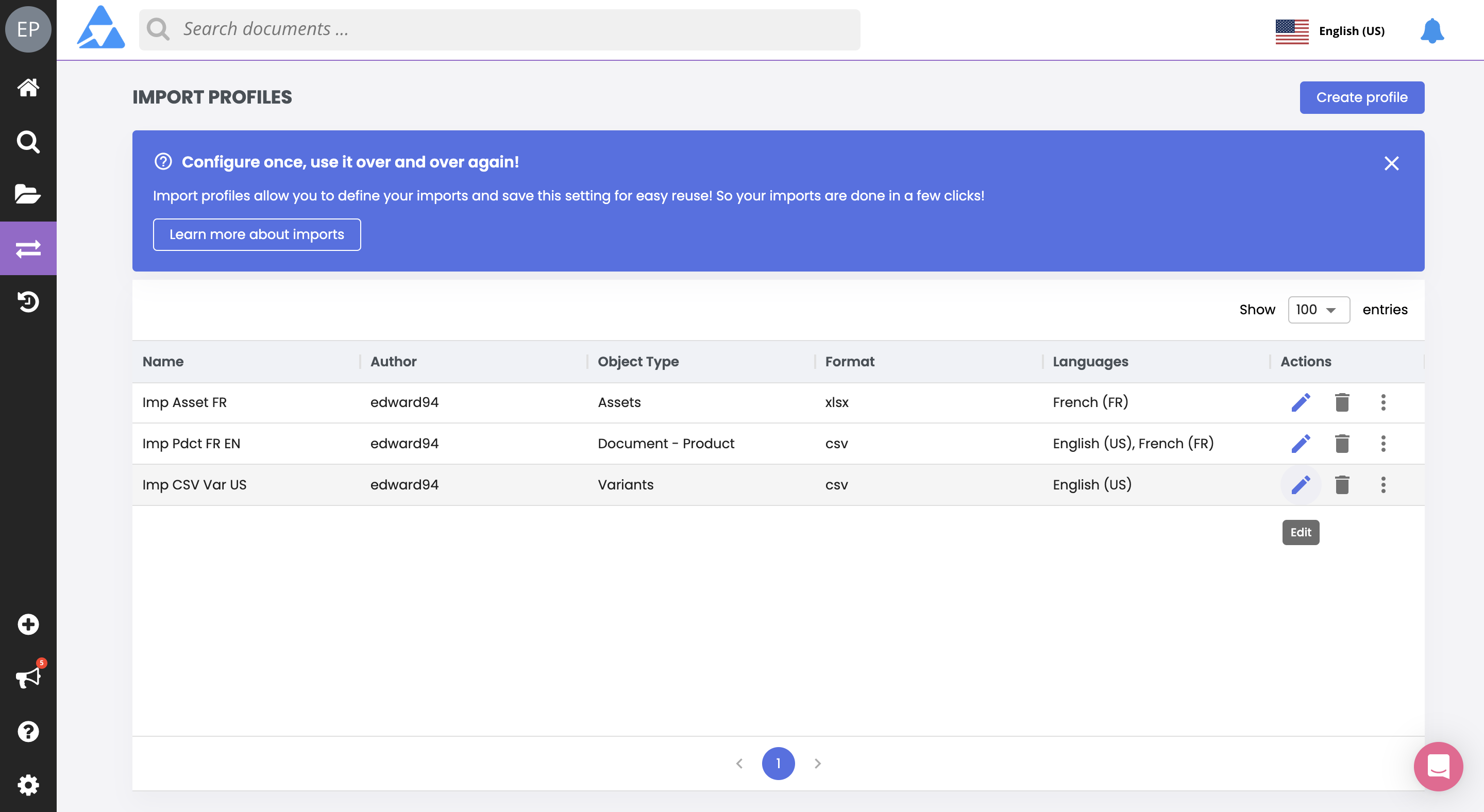
The Edit import profile page is displayed. You can modify the:
- Name
- Description
- Empty cell action
- Import File Format parameters (The format of the file can not be changed.)
- Mapping
When you've finished making modifications, click the Save button to save your changes or the Return link (at the top of the form) to return to the Import Profiles page without saving the changes.
Deleting Profiles
To delete an import profile, click on the Delete icon on the Import Profiles page. A dialog is displayed to cancel or confirm the deletion.

AttentionThis action is irreversible. Once an import profile has been deleted, it can't be recovered.
Updated 3 months ago
